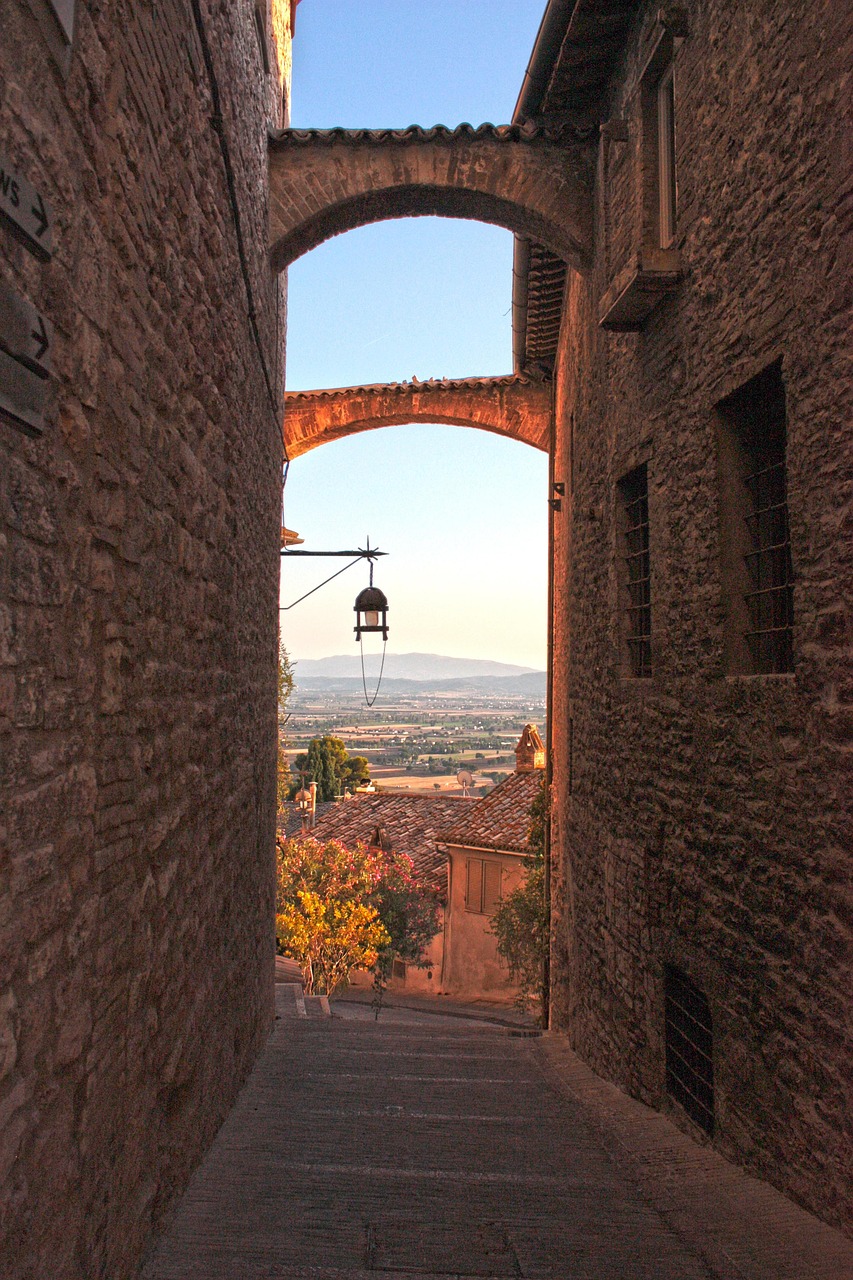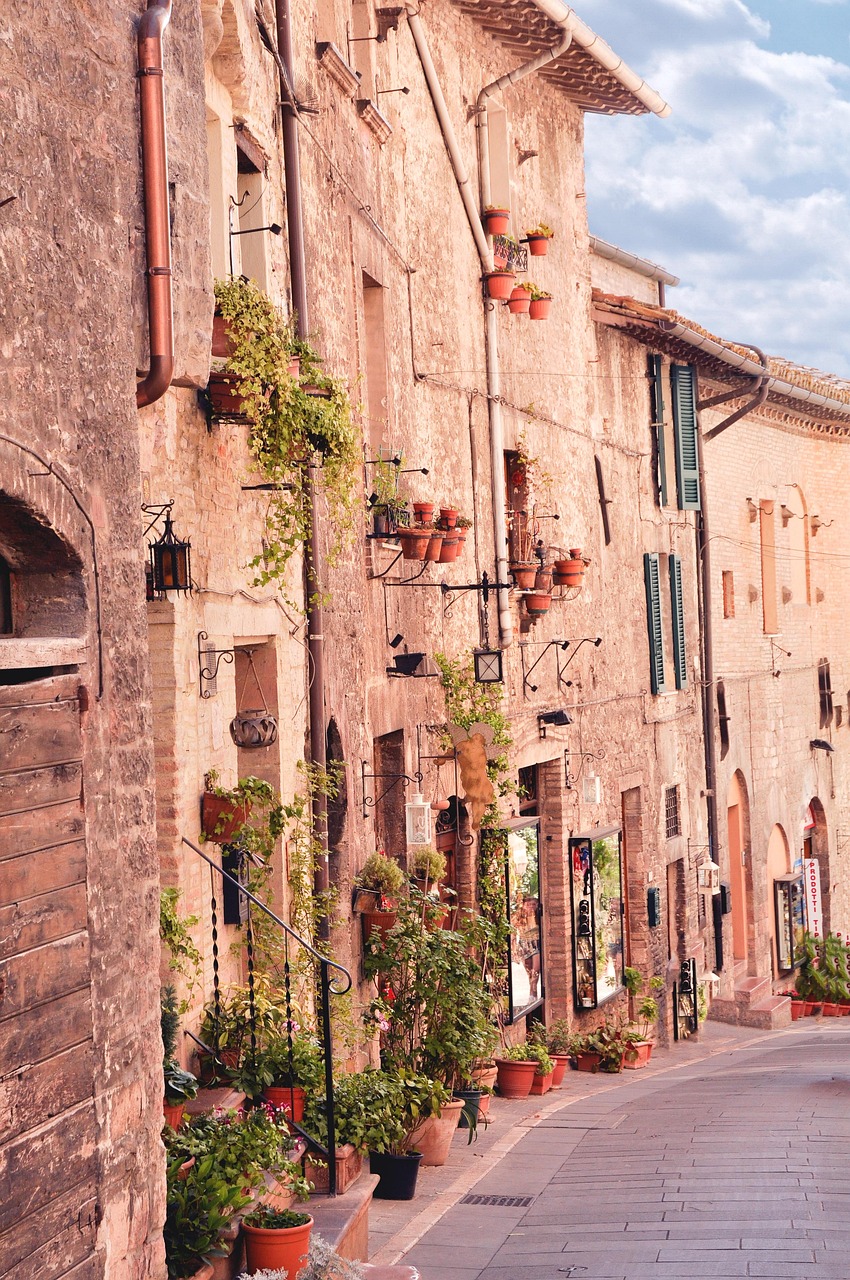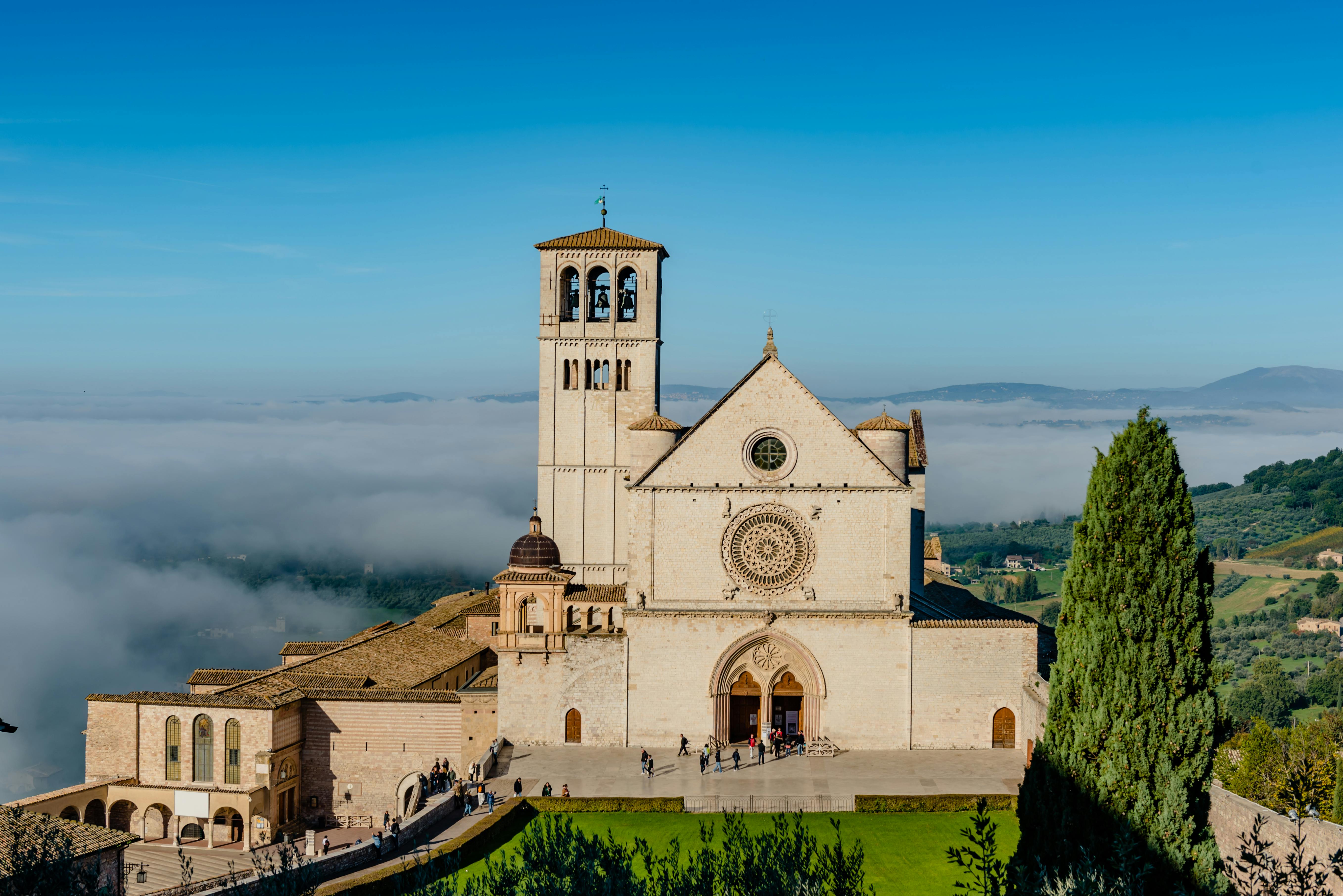Located in the green heart of Umbria, Assisi is one of the most enchanting destinations in Italy. Forever linked to the life of Saint Francis, it’s a place where history, art, spirituality, and beauty blend in perfect harmony.
In this guide, we’ll explore what to see in Assisi, what to do, which events to experience, and which traditional dishes to savor to fully live the soul of this town.
Assisi has an ancient past that dates back more than two thousand years. In Roman times it was known as Asisium, and still today it preserves ancient remains like the Temple of Minerva in Piazza del Comune and the fascinating Rocca Maggiore fortress.
What made Assisi famous around the world is its medieval and spiritual character. The city of Saint Francis and Saint Clare stands as a symbol of peace and love for nature. From the Middle Ages to today, Assisi has preserved its identity, becoming a UNESCO World Heritage Site and one of the most visited art cities in Italy.
What to see in Assisi
Assisi is an open-air museum, and every corner tells a story.
We’ve prepared a list of the must-see places in Assisi, a town of faith, art, and humanity. Whether you come for spirituality, culture, nature, or great food, you’ll always find something that moves you and leaves deep memories. Why not dedicate a full day to exploring its wonders?
- Basilica di San Francesco;
- Basilica di Santa Chiara;
- Tempio di Minerva;
- Rocca Maggiore;
- Eremo delle Carceri.
E ora partiamo insieme alla scoperta di questi luoghi!
Basilica di San Francesco
Divided into two overlapping churches (Upper and Lower), this is the spiritual heart of the city. Inside you’ll find world-famous frescoes by Giotto, Cimabue, and Lorenzetti, as well as the tomb of the Saint. This is where art and spirituality meet.
Construction began in 1228, just two years after Saint Francis’s death, to house his remains. Tradition holds that Francis himself chose this location for his burial.
The stunning façade features French Gothic elements combined with horizontal bands and a rose window typical of Italian style.
The Lower Church invites silence, and its austere architecture calls for reflection and humility. The vault above the main altar, painted by Giotto, is one of Italy’s greatest artistic treasures, depicting the three Franciscan vows: Poverty, Chastity, and Obedience.
The Upper Church, on the other hand, is light and uplifting, with vertical lines that reach toward the sky.
Basilica di Santa Chiara
Dedicated to the founder of the Poor Clares, it houses the crucifix that spoke to Saint Francis and the remains of Saint Clare. The church’s Gothic style is simple and elegant.
Its architecture was inspired by the Upper Basilica of Saint Francis. The façade features beautiful pink and white stone from Mount Subasio. The interior now appears almost devoid of frescoes; only a few elements remain, depicting stories from the life of the saint, attributed to Giotto's disciple, the Expressionist Master of Santa Chiara. In the Chapel of Saint George, you'll find the famous 12th-century crucifix that is said to have spoken to Saint Francis.
Tempio di Minerva
Located in Piazza del Comune, this Roman temple from the second half of the 1st century BC is remarkably well preserved and now houses a Baroque church. It’s a fascinating contrast between ancient and modern.
The façade is original, featuring six fluted columns topped with beautiful Corinthian capitals.
Rocca Maggiore
The Rocca Maggiore is a medieval fortress tower above Assisi and offers breathtaking panoramic views of the Umbrian valley, perfect for unforgettable photos.
The first confirmed record of a fortification here dates back to 1174, when the city was taken by the Suevian dynasty of Emperor Frederick I Barbarossa.
Twenty-four years later, it was destroyed during a bloody revolt, which legend says a young Francis participated in.
Today, in fact, we can admire a 14th-century reconstruction, commissioned by Pope Innocent IV, who had it built in an attempt to reclaim those territories that had slipped from the Church’s control
Eremo delle Carceri
Nestled in the green woods of Mount Subasio, this is a place of silence and mediation where Saint Francis used to retreat to pray in solitude.
The word "Carceri" comes from the Latin carcer, meaning "prison" or "secluded place”, ideal for spiritual reflection.In Francis’s time, it was a small chapel where he would go with his first companions. In the 14th century, the Franciscans were officially granted the space, and they built the first cells around the Church of Santa Maria.
The current complex dates to the 15th century, as noted on the entrance to the refectory. Inside, visitors can see a 16th-century fresco of the Last Supper and simple wooden tables from the 1400s.
What to do in Assisi - the Slow Active Tours proposal
Assisi offers many opportunities to experience the area authentically. Here’s a list of experiences not to miss!
The Diocesan Museum holds medieval and Renaissance masterpieces and is located in the crypt of San Rufino Cathedral. It features rare frescoes and a Roman sarcophagus that once contained the remains of Saint Rufino, the city’s patron.
Among its highlights are 14th-century frescoes by the Master of Saint Clare and a collection of Tuscan artworks donated by American art critic Frederick Mason Perkins.
The Contemporary Art Gallery of Pro Civitate Christiana is part of an association founded in 1939. Thanks to its strong tradition of patronage, it now houses over 2,500 works of painting, sculpture, and graphic art by around 700 artists.
The Museum of Memory is dedicated to the "Righteous Among the Nations" who saved Jews during the Holocaust. It includes rare documents and objects from those who, between 1943 and 1944, helped save the Jews. During that period, 300 lives were saved from the horrors of the Shoah thanks to the spirit of hospitality of the Franciscans from Assisi.
An important space is dedicated to Luigi and Trento Brizi, Assisi’s printers who risked their lives producing false ID papers to help people escape.
Also worth visiting is Palazzo Vallemani and Assisi’s Municipal Art Gallery. Palazzo Vallemani is one of the most beautiful in Assisi. The first floor is completely adorned with frescoes by 17th- century Umbrian and Tuscan painters. Inside is the gallery (Pinacoteca Comunale), home to medieval and Renaissance works from Assisi and its surroundings, including a Madonna attributed to Giotto and paintings by Perugino.



Festivals and Popular Events in Assisi
Assisi’s traditions are heartfelt and deeply tied to its spirituality and culture:
On October 4th, thousands gather for the Feast of Saint Francis, Italy’s national religious holiday, featuring ceremonies, fireworks, and pilgrimages.
The Calendimaggio of Assisi is a medieval festival celebrating the arrival of spring. The town is divided into the 'Parte de Sopra' and the 'Parte de Sotto,' who compete in music, poetry, tournaments, and dances in medieval costume.
In the second half of October, Assisi hosts Assisi Pax Mundi, a sacred music festival that highlights Franciscan values through choral and instrumental performances.
June 22 marks the city’s deliverance from Saracen invaders, thanks to Saint Clare’s prayers. On the eve, the entire city is lit with hundreds of torches.
At dawn the next day, church bells ring, and a procession of confraternities and officials brings votive candles to the Monastery of San Damiano.
Traditional Dishes of Assisi
Assisi’s cuisine reflects Umbria’s rustic and flavorful culinary heritage, based on local ingredients like olive oil, truffles, legumes, and game.
Strangozzi al tartufo is a pasta dish similar to tagliatelle, served with black truffle from Mount Subasio and local olive oil...Absolutely a must-try.
Torta al testo is a flatbread cooked on a hot stone, filled with sausage, grilled vegetables, or cheese; a kind of ancient Umbrian street food.
The traditional Umbrian dessert is rocciata, a strudel-like pastry filled with apples, walnuts, raisins, and cinnamon, symbol of the farming tradition.
Pair your meal with a glass of Sagrantino or Montefalco Rosso, and don’t miss the DOP-certified olive oil from the hills around Assisi.
Eating and Drinking in Assisi
Here are some proposals from the area:
Now that you know what to see in Assisi, all that’s left is to wander its cobblestone streets, guided by the scent of fresh bread and the distant chime of church bells.





